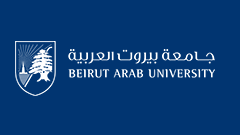Keywords
Cultural Heritage, Public open spaces, Community of Al-Fayhaa Union, Technology Tools, Qalamoun, Sustainable development.
Disciplines
Architectural Technology | Historic Preservation and Conservation
Abstract
Over the past three decades there has been a tremendous transformation in cultural heritage, both in terms of practices and in the understanding of cultural heritage. These changes are very much connected to wider changes in the very nature of culture and reflect major social and political transformation. They are also very much evident in the re-shaping of public space in more inclusive ways for diverse histories and experiences (Gerard Delanty). Furthermore, having cultural features in the public spaces of the cities contributes in bringing communities together and strengthening the local economy as well. Thence, enhancing heritage and innovations in public spaces may act as an effective key for building more sustainable societies. Lebanon is suffering from shortage of natural and urban public spaces due to the Lack of planning and regulations that protect these spaces and the increase in population diversity leading to the expansion of unorganized urban growth. The Aim of the study is developing guidelines in order to evaluate the influence of technology in conserving the cultural heritage and creating the conditions for increased urban development in Tripoli coastal cities precisely Qalamoun town. The main Objectives of the study is to determine the ability of technology tools in improving the urban development of coastal cities associated with cultural heritage, and to deduce the applicable technology tools for conserving and managing cultural heritage in Al-Fayhaa cities. This paper is based on literature review, analytical quantitative study. In addition to a comparative analysis of international case studies done in an earlier stage that helps in deducing the convenient tools that can be relied upon in the Qalamoun case. The purpose of this paper is to emphasis that integrating technologies into the open public spaces of the old cities with cultural heritage identity is a must to maintain the resilient and continuation of these cities. Moreover, the interfering of such kind of tools must be used to both conserve cities identity, and to provide new conditions to match the requirements of the current era inhabitants.
Recommended Citation
Karim, Nehmat K.
(2020)
"APPLIED STUDIES ON ENHANCING PUBLIC OPEN SPACES OF THE COASTAL CITIES: THE CASE OF TRIPOLI CITY_ URBAN COMMUNITY OF AL-FAYHAA,"
BAU Journal - Creative Sustainable Development: Vol. 2:
Iss.
1, Article 9.
DOI: https://doi.org/10.54729/2789-8334.1033
ISSN
2789-8334

